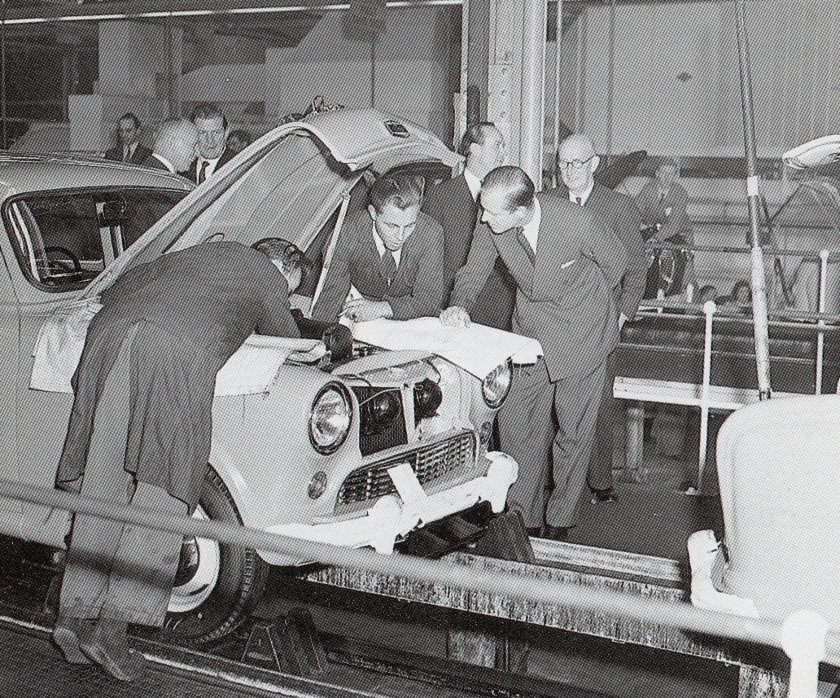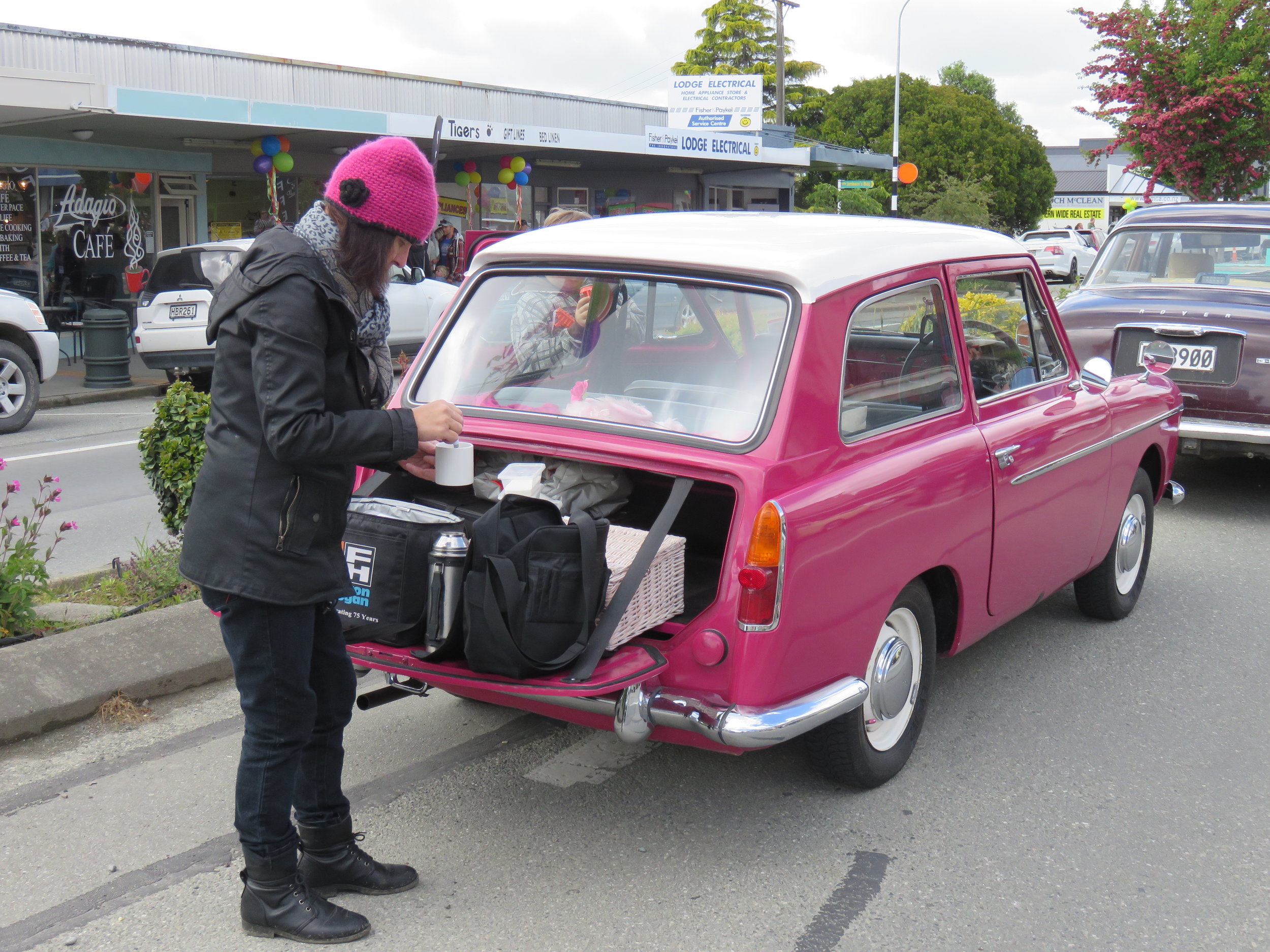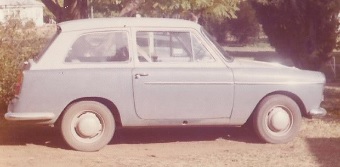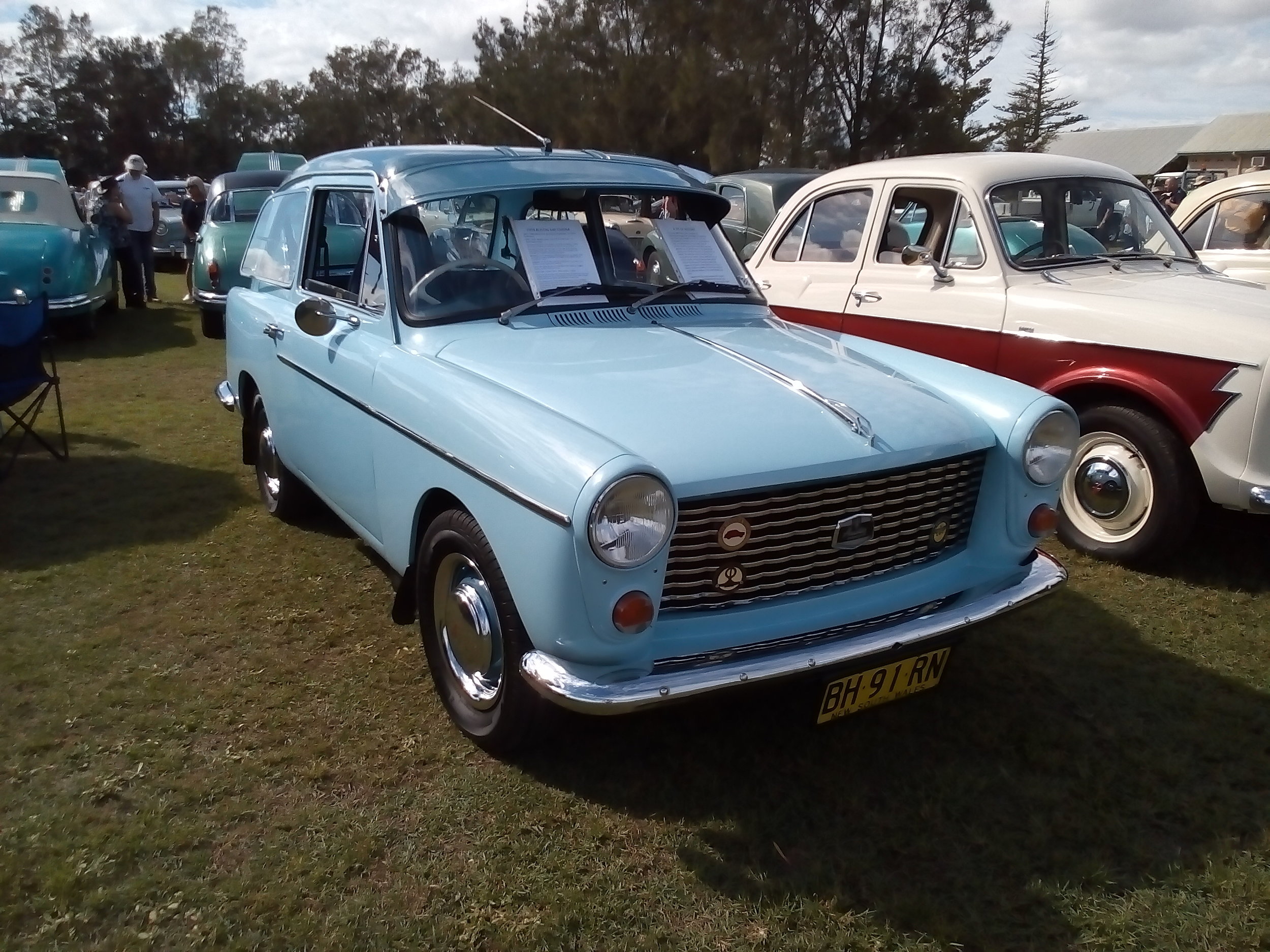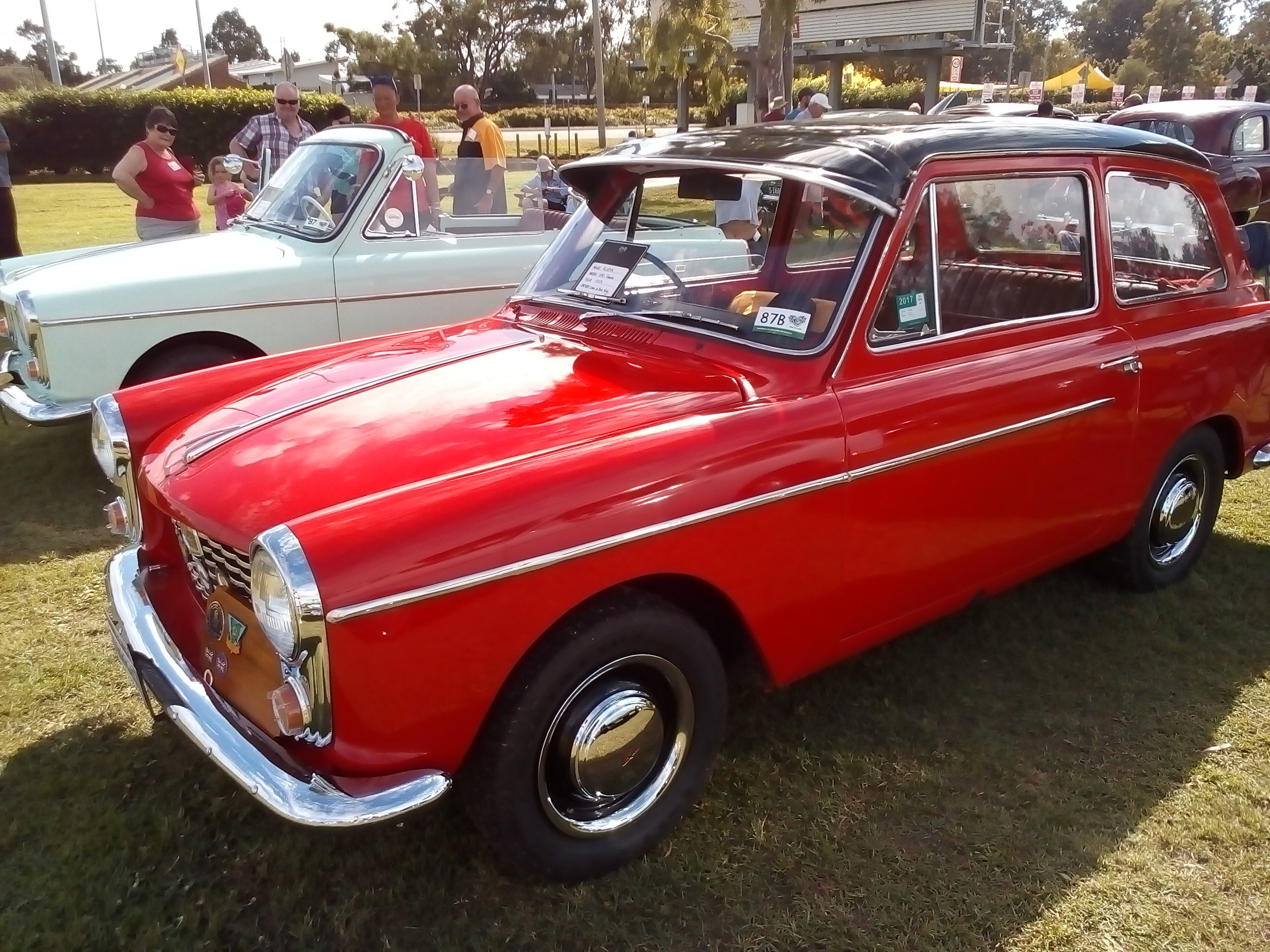Happy 60th birthday A40 Farina!

October 1958, marked the beginning of production of the Austin A40 Farina. The MkI model ran from 1958 to 1961, with the MkII model being produced from 1961 to 1967.
The MkI models were powered by the 948cc A-series engine. This engine was also in the early MkII's, until the 1098cc A-series engine was installed from 1962.
The Countryman "full hatch" model came in October, 1959. Up until then, the only model available, was the saloon, in which only the boot dropped down.
There were 169,612 MkI units built and 172,550 MkII units, between 1958 and 1967. The Farina, in Countryman form, is widely regarded as the world's first true "hatchback" vehicle. Some adventurous overseas Farina owners, have even re-engineered their two-piece hatches into one-piece, single lift hatches, of the variety more common today.
The Austin A40 Farina and eventually other "Farina"-bodied cars, came about partly, or perhaps wholly, by an accident of fate.
In December, 1955, Prince Philip, the Duke of Edinburgh, was visiting Austin's Longbridge Plant, in Birmingham. After touring the assembly lines, he was taken through to the company's drawing offices, where the new designs to take the company into the 1960s were being scribed.
Prince Philip was himself, studying design engineering at the time, so was particularly interested to see Austin's designs for the future. There were also many full-scale clay models of proposed future cars about the design department.
After studying the drawings and clay models, the Duke could see no radical change away from the rather staid "tried and true" designs of the past. Having had this interest in design for some time, he could see that BMC would struggle to compete against foreign competition moving forward, as European designs were already showing signs of big change away from designs that had essentially been much the same in looks since before World War II.
He then asked Leonard Lord the "Austin boss", if he had ever considered employing an 'independent' designer? The rather brusque by nature, Len Lord replied: Like who? The Duke later said he just mentioned the first name that came into his head, which happened to be Pinin Farina, who to everyone's astonishment, was subsequently hired.
Battista 'Pinin' Farina received an GBP84,0000 contract to design a new car to replace the ageing A35. The result was a brilliant re-packaging of the A35's running gear with a ground-breaking body style, years ahead of anythingAustin had produced up until then.
Austin's own in-house designer Dick Burzi, had already been working on a proposed replacement for the A35, so it was a big disappointment to him, when officially, in 1956, his ideas were cast aside in favour of 'outsider' Farina.
Although the bulk of the styling would come from Farina's pen, Burzi still worked with Farina on the designing of the finer points and it is said the two men got on pretty well together.
Thus, we probably have to thank Prince Philip for this complete U-turn in the styling of many of BMC's products, from this point on. It is very unlikely that any other person involved with Austin, or BMC overall at the time, would have dared to confront Leonard Lord on a design issue, let alone expect a positive outcome from it. I think the pure grunt of Royalty and the respect that it demands, had a fair bit to do with the change in tack.
Not everyone at Longbridge was convinced this complete new style of car was the way to go. Lord's deputy, George Harriman, who was a fan of Pinin Farina, since he had commissioned him to try to break design deadlocks that occurred after Morris and Austin were joined in 1952, to become BMC, was once so incensed when he heard the new car with no "extended boot" being referred to as a 'van', that he threatened to sack the next man he heard saying that.
Some assembly hall workers thought the Farina would kill off other small cars being produced. In fact the A40 Farina was only added to the stable. It never killed off any other car. The A35 continued to be built as a saloon for a full year after the Farina's inception, then continued on as a van well into the 60s. The Morris Minor, built at Cowley, marched on as strong as ever, into the early 70s. The new Mini became hugely popular and was definitely never going to be harmed by the A40 Farina.
The Farina was built for a unique market, or several markets, that would never be fully realised for some time. A car probably well ahead of its time, it couldn't be nailed down to being one particular type of vehicle. It was in fact, several types of vehicle rolled into one package.
This new concept, from 1958, is now one of the most popular forms of car body on the planet. Yes, it was the world's first "hatchback". You could use it as a normal saloon car, or by folding down the interior it could be a small "tradies" vehicle, a delivery vehicle or even a camper, if you weren't too tall. It just took time for people to realise its versatility and ease of access to any part of the car. It even became a very good circuit-racer and rally car.
Like any completely new concept, people take some time to get their heads around it. In the beginning they may even fear it, or see it as useless, but if the designers have really done their homework and the car looks good for its time, it will sell okay. And sell okay it did, with 342,162 Farinas going out the door, over nine years.
Happy 60th birthday, Austin A40 Farina. Well done!

